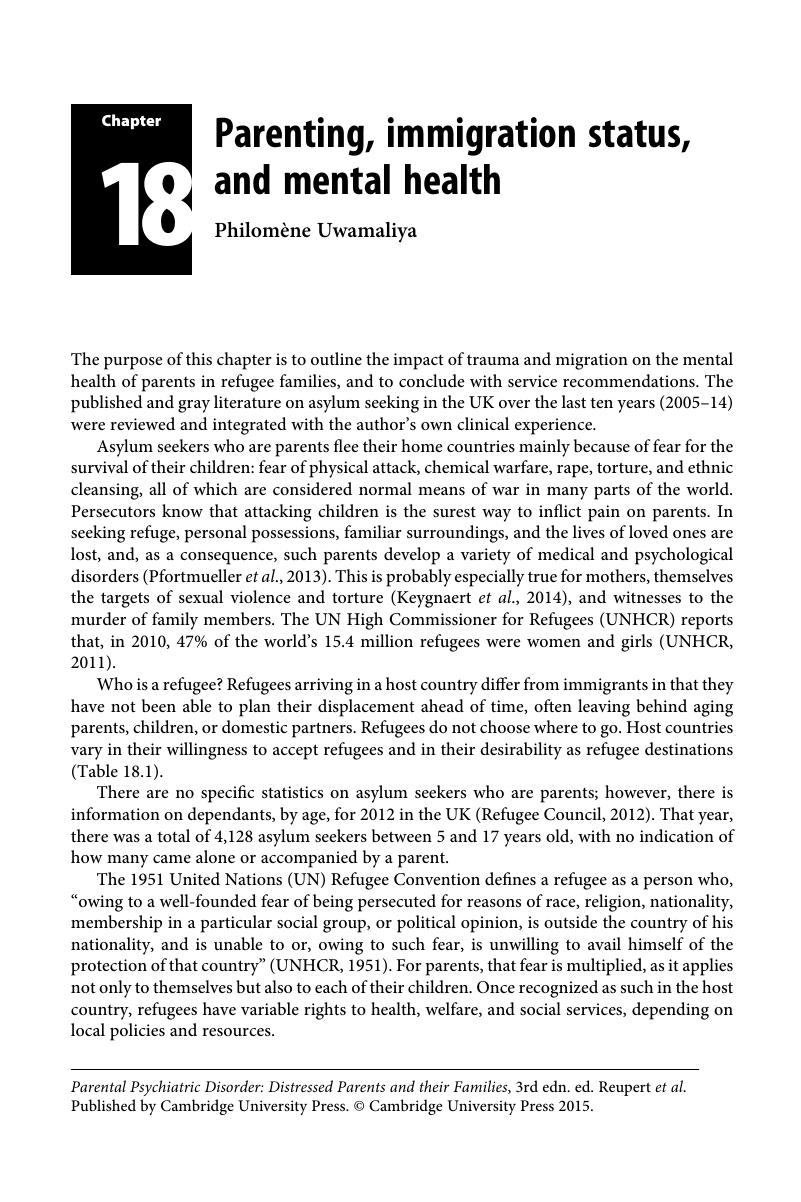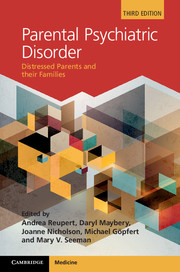Book contents
- Parental Psychiatric DisorderDistressed Parents and Their FamiliesThird edition
- Parental Psychiatric Disorder
- Copyright page
- Contents
- Contributors
- Preface
- Section 1 Fundamental issues
- Section 2 Comprehensive assessment
- Section 3 Specific disorders: the impact on children, parenting, and family relationships
- Chapter 11 Schizophrenia and motherhood
- Chapter 12 The impact of parental depression on children
- Chapter 13 Parents with anxiety disorders
- Chapter 14 Children of parents who abuse alcohol and other drugs
- Chapter 15 Mothers with eating disorders and their children
- Chapter 16 Parenting and borderline personality disorder
- Chapter 17 Working with parental personality disorder: key issues for mental health professionals and services
- Chapter 18 Parenting, immigration status, and mental health
- Section 4 Child, parent, and family interventions
- Section 5 Building workforce, organizational, and community capacity
- Index
- References
Chapter 18 - Parenting, immigration status, and mental health
from Section 3 - Specific disorders: the impact on children, parenting, and family relationships
Published online by Cambridge University Press: 05 July 2015
- Parental Psychiatric DisorderDistressed Parents and Their FamiliesThird edition
- Parental Psychiatric Disorder
- Copyright page
- Contents
- Contributors
- Preface
- Section 1 Fundamental issues
- Section 2 Comprehensive assessment
- Section 3 Specific disorders: the impact on children, parenting, and family relationships
- Chapter 11 Schizophrenia and motherhood
- Chapter 12 The impact of parental depression on children
- Chapter 13 Parents with anxiety disorders
- Chapter 14 Children of parents who abuse alcohol and other drugs
- Chapter 15 Mothers with eating disorders and their children
- Chapter 16 Parenting and borderline personality disorder
- Chapter 17 Working with parental personality disorder: key issues for mental health professionals and services
- Chapter 18 Parenting, immigration status, and mental health
- Section 4 Child, parent, and family interventions
- Section 5 Building workforce, organizational, and community capacity
- Index
- References
Summary

- Type
- Chapter
- Information
- Parental Psychiatric DisorderDistressed Parents and their Families, pp. 188 - 200Publisher: Cambridge University PressPrint publication year: 2015
References
- 2
- Cited by



